September is late-sedge season, and for the last two weeks Brett Engstrom and I have been working to find missing species for the Atlas image libraries. We spend two days in the field, take a lot of photographs and notes, and then I spend two or three days in the studio, studying and photographing what we found.
It is fascinating work, and, because the late sedges are mostly shore and marsh species, takes us beautiful places. Here is Gilligan’s Bay, on Lake Champlain, where we went for a rare bulrush.
And, in the central Adirondacks, another bulrush site, though a smaller one, at Harris Lake,
The species are rare and challenging, which is fun. And, I get to work with Brett, who is amazing. Nothing with achenes can hide from him.
Here he is at Harris, with the bulrush Schoenoplectus tabernaemontani. It is common but not always easy.
In about ten days we studied and photographed 22 species of sedges, 16 new to the Atlas. Here are some highlights.
We started at Lilly Pond in southeastern Vermont, a mucky pond with costal-plain species like buttonbush and fox grape.
We were looking for Fimbristylis autumnalis, a small delicate species, also with coastal plain affinities.
It needs an exposed sandy shoreline. The pond was mostly mud, but there was a nice sandy boatlaunch and fimbristylis and most of the other shoreline species grew there.
The pink flowers in the foreground are meadow-beauty, Rhexia virginica, rare this far inland.
The fimbristylis grows grows in tangles with panic grass and a couple of other sedges. This is the best picture I could manage. The small grass with it has different names in different books; we call it Panicum philadelphicum.

From there we went to a big pool in the Connecticut River, below Vernon Dam. It has high banks and sandy shores. The shore plants are in rows, corresponding to the water level at different times.
Sandy shores are good for the flat-sedges in the genus Cyperus. We found our common species, Cyperus strigosus, with golden-brown spikelets and long scales.
The books say it is a perennial, but before it develops a perennial base it is indistinguishable from an annual.

One of the leaves has the lacy pupal case of a spongilla fly. I don’t know how or why insects do this sort of thing.
We also found two southern species that are much rarer with us. Here is Cyperus erythrorhizos: short, flattened spikelets with very short scales.
Its best technical character are some small wings—”rachilla scales” in the manuals—that separate from the spikelet axis.

The second uncommon species was Cyperus odoratus, with long stringy spikelets, like knotted cords, and red-brown rather than gold-brown.
Its technical characters are rachila-wings that cover the base of the achene, and joints in the axis of the spikelet.
And that was morning one: two sites, three uncommon species, lots of sun, mud, and water.
In the afternoon we went into the hills, to a small fen in central Vermont where Brett had seen an uncommon northern Carex. It was cloudy now; the light was soft and the colors much more subtile.
This was quite a different sort of place: a peaty meadow, with some bog mosses, within a chain of old beaver ponds. There are hundreds of such meadows in the northern forest, and at first it didn’t look any different than any other. Here is one of the old dams, with alders and the red-stemmed bulrush Scirpus microcarpus.
The open meadows below this dam turned out to be anything but ordinary. They had an odd mixture of beaver-pond and rich-fen species, suggesting limy seepage. They also had big colonies of a light blue-green sedge, which was what we had come for.
Close up, it looked like Carex aquatilis, a reasonably common fen species that also forms large, blue-green patches.
But the fruits were wrong for aquatilis and fit those of Carex rostrata, a much rarer species.


Rostrata is transcontinental in the north but very rare this far south. It is not listed for New England in the Flora of North America, but it is in fact here, and, thanks to Brett, I got to see it.
On the way out we picked up some nice mosses, which will have to wait for another post, and a tiny bulrush, Schoenoplectus purshianus. My specimen wasn’t very good.
But it gave me nice pictures of the spikelets.
And of the tapering bristles, which seem to be a good technical character. The achene here is a bit under 2 mm, pushing the limits of what I can take a clear photograph of with my lenses.
Purshianus is uncommon. This gave us five rare or uncommon species for the day. Which is remarkable, but days with Brett tend to be remarkable.
The second day was different. We were looking for a single species, Scirpus ancistrochaetus, another bulrush and probably our rarest one. It is a north-eastern endemic, known from Quebec and about six northeastern states. It is very erratically distributed, usually in beaver ponds or woodland pools, and always in small quantities. Brett says the best way to find it is to look near someplace where you have already found it.
We went looking in a small swamp in second-growth woods on a flat-topped ridge in eastern Vermont. Second-growth maple and beech, big hemlocks, big old walls. A pretty place.
Here there was a medium-sized vernal pool that had cinnamon fern and shrubs in the center.
The outer parts of the pool were too dark for shrubs. They flooded in the spring and had deep mucky soils. When we saw them they were covered with beggars-ticks and water horehound.

Scirpus ancistrochaetus grew near the edge, among fallen hemlocks, in a place that was flooded in the spring.
The hemlocks, by the way, grow on the banks, not in the pool, and fall into it from outside.
Vegetatively, ancistrochaetus is probably indistinguishable from the common woodland bulrushes of the atrovirens group. But it had arching branches in the fruit cluster, which they never do,
and grew in a pool on deep muck, which they usually don’t. The barbs of the bristles around the seed were quite strong, which is the most commonly used technical character.
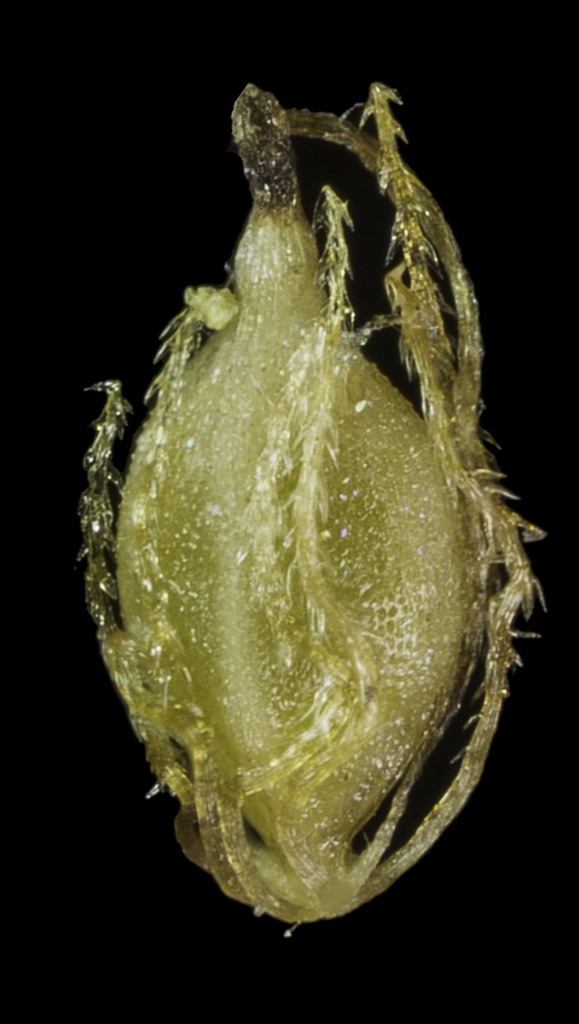
And that was our first late-sedge trip. The second one, which took us to Lake Champlain and the Central Adirondacks, will be in another post.




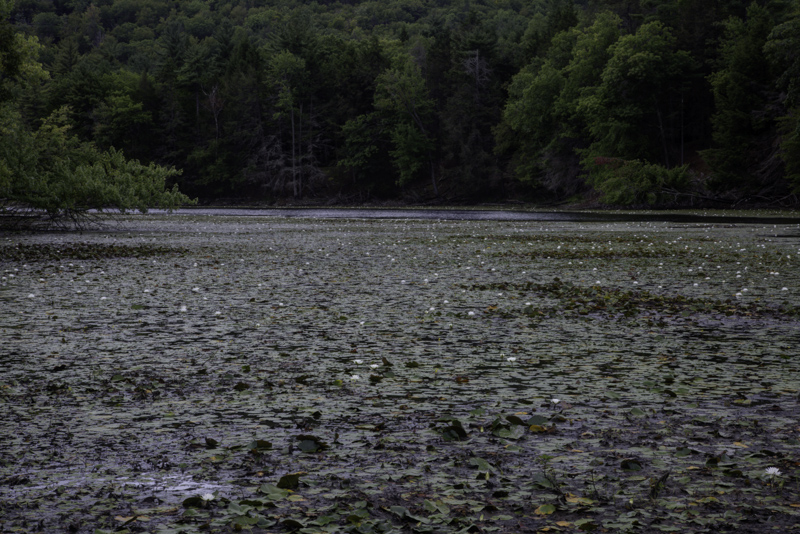





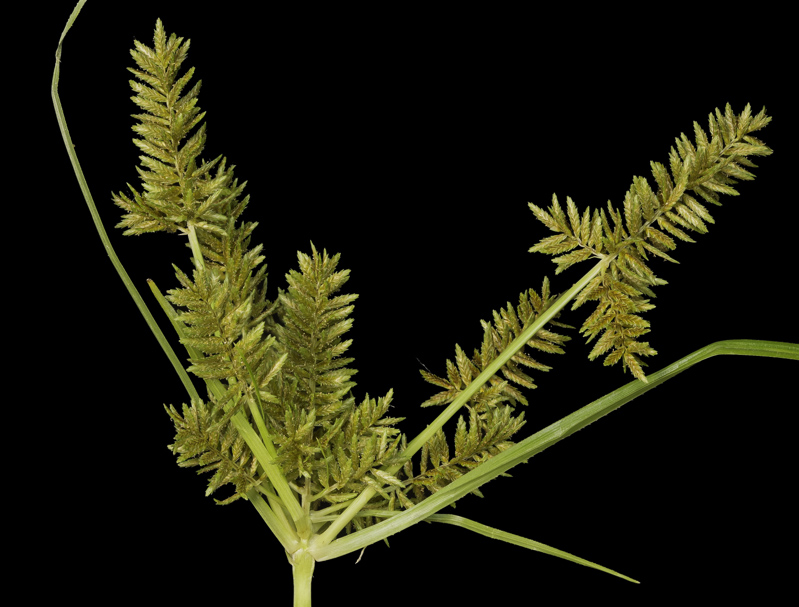



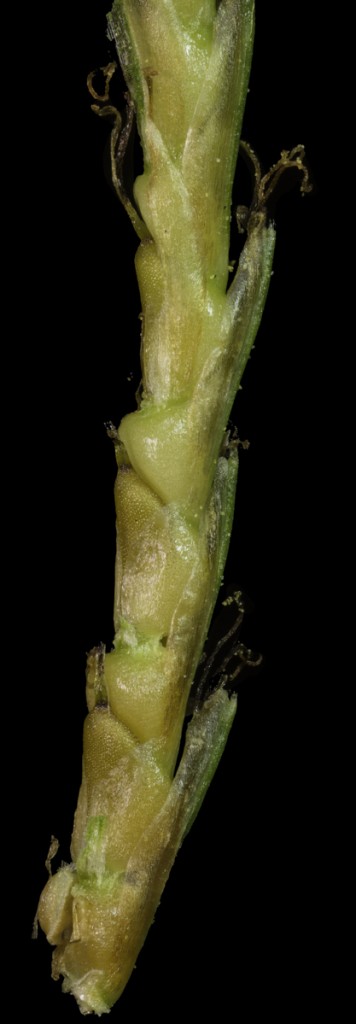







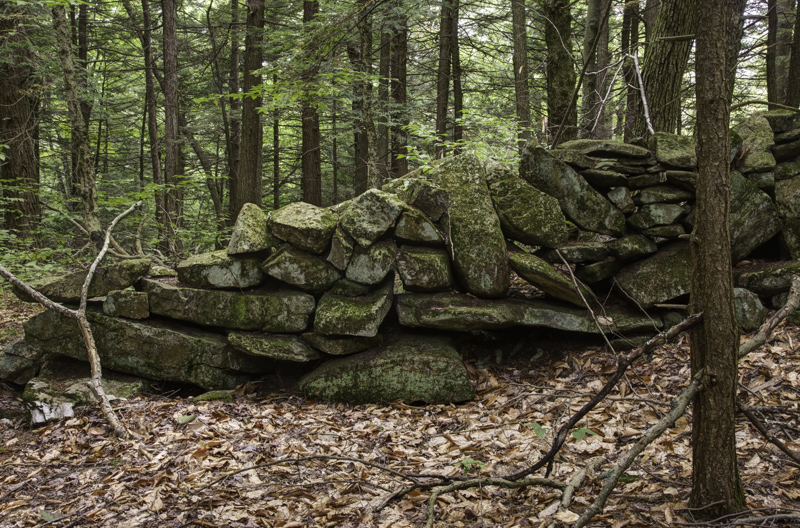



Awesome finds and amazing to think of the range of what you found and where you went. Thanks for the post as I feel like I was on your shoulder and in your powerful minds. Bravo! Margot
Jerry, The blog is great! It’s a tremendous effort on your part but very worthwhile. The descriptions are simple and clear. The photos are incredible. How can I get notifications of new posts?
Thanks Jerry! Fabulous!